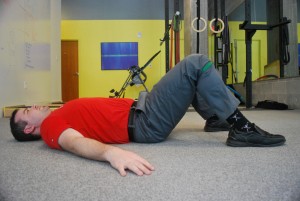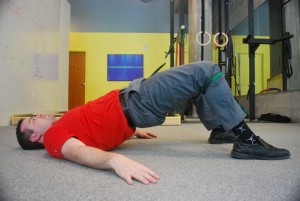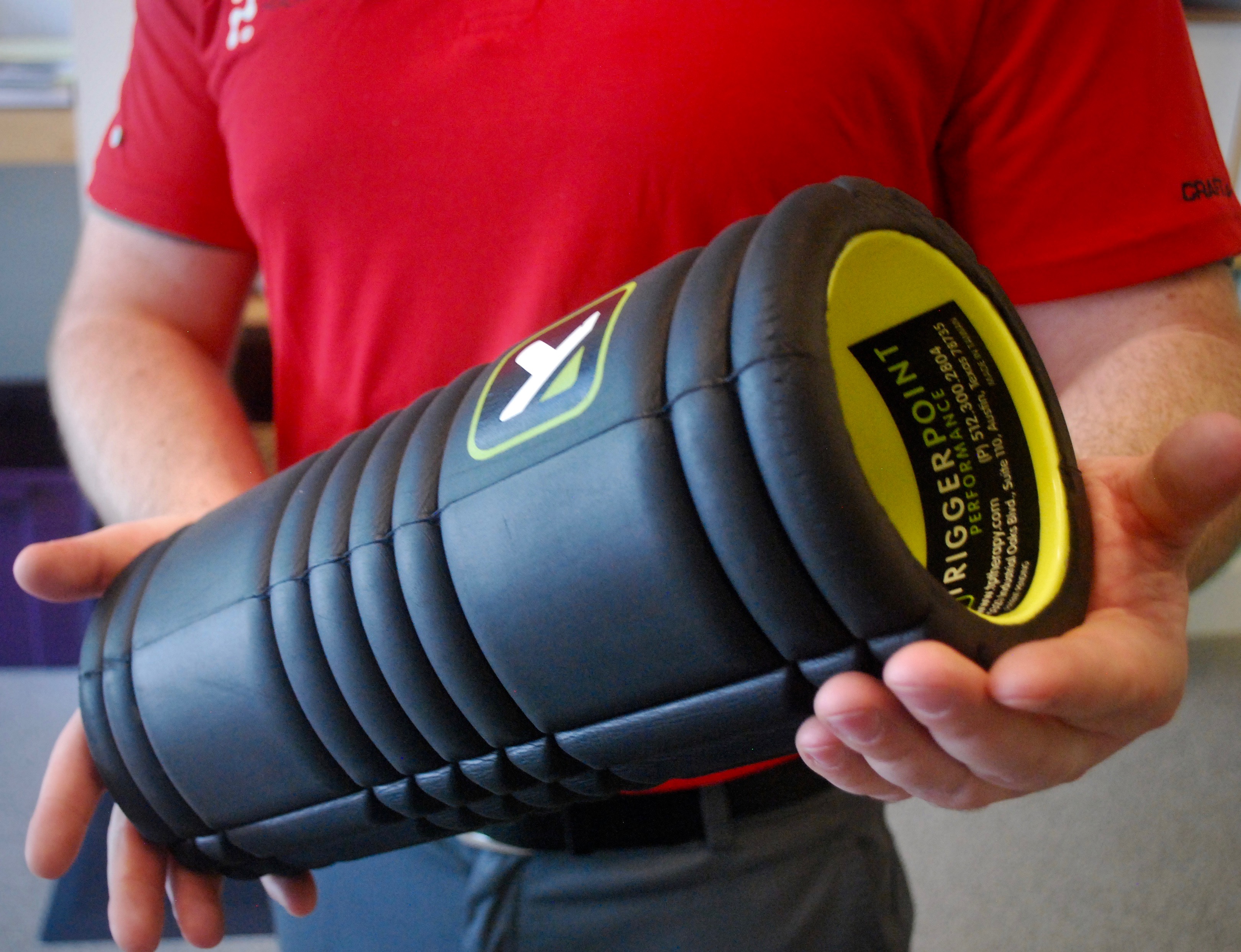
Approx. 10 min read
A balance between stability and mobility is essential to function properly, to keep your joints healthy for the long haul and remain pain free. However, almost everyone tends to have an imbalance of one over the other, with some folks even having hypermobility at one joint and rigidity at another. In the blog today, we’re going to:
1. Define stability and mobility
2. Explain the dangers of having too much and or too little of either
3. Give examples for how to improve each
Defining Stability and Mobility
It seems everybody and their brother’s cow has a slightly different definition of mobility. The American Council of Exercise (A.C.E.) defines mobility as “the degree to which an articulation (where two bones meet) is allowed to move before being restricted by surrounding tissues (ligaments/tendons/muscles).” A.C.E. defines stability as the ability to maintain or control joint movement or position. Stability is achieved by the coordinating actions of surrounding tissues and the neuromuscular system. If we simplify this, we could say it’s the ability to prevent unwanted movement that would harm tissue or impede performance.
Now, most people do favor either stability or mobility, and this is due to genetics, and chosen activities by that individual. An olympic lifter needs more stability than a yoga instructor. A yoga instructor will need more mobility than a power lifter. However, a yoga instructor with poor stability and a power lifter with poor mobility are both going to be injured. Regardless of activity and lifestyle, everyone needs a balance of mobility and stability in order to function properly.
Think of your body as a car. If the wheels start to become loose, those tires are going to be banging around, shredding the rubber of the tire, crinkling the rims, the wheel well itself, and stripping the bolts and the screws trying desperately to keep that tire on. In this condition, driving just a few blocks -even slowly- can mutilate all that hardware quickly. Can you imagine what would happen if you tried to take that car off-roading over dirt ramps and charging up hills? This is analogous to what is happening at a joint with too much mobility and not enough stability. Just substitute “slow driving” with “walking,” and “off-roading” with “CrossFit,” and you are going to get an idea of what is happening to your joints.
Conversely, think about what happens to a car when the rear parking brake is left on and the driver drives off. Now, instead of the tires flopping around all over the place, they are being severely restricted while being forced to move! So now your poor front tires have to continue to do their job, and also have to do the job of the back tires. THEY ALSO HAVE TO WORK AGAINST THE INFLEXIBILITY OF THE REAR TIRES! It’s a triple whammy! Those rear tires are all the hardware holding them together are getting slaughtered, and the front tires are going to break down from being overworked. So now, substitute “hamstrings” for “rear tires,” and substitute “low back” for “front tires,” and you may have an understanding of why your back has gone out.
So how do I fix this?
1. Be mindful of your posture, both statically and dynamically
2. Mobilize what is restricted (moving too little)
3. Stabilize what is hypermobile (moving too much)
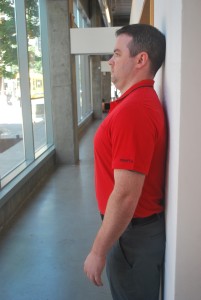
Standing Wall Test
Correcting your posture is paramount to avoiding and correcting imbalances. The muscles of your body are in a tug of war: some muscles want to fold your body forward, others want to extend you backwards, while others want to bend or twist you. When one group gets dominant over another, that’s where
problems start. One of the best initial tests to check posture is the StandingWall Test, developed by Neuromuscular Therapist Paul Chek of the CHEK Institute. Here, the goal is to try and stand with the back of your calves, buttocks, shoulders and head touching the wall. You should have enough room to barely slide your hand between your lower back and the wall. You should be able to keep your eyes level as your head touches the wall; you should not have to bend your head up in order for it to touch. For most people, this will feel awkward, but this is neutral posture. If you can’t maintain this or you have pain, then you have an imbalance (don’t feel bad, most people do).
A great way to check your dynamic posture is to be tested with the 7 Point Movement Functional Movement Screen (FMS) developed by Physical Therapist Gray Cook. One example from this test is the Overhead Squat Test. This test will show compensations in your mobility and stability that can be hidden in the static test. We perform this screening test at our clinic and are happy to assist in showing you the ropes at your next rehab session.
“So great. Now I feel bad that I have compensations. What the heck am I supposed to do about it?”
We mobilize what is tight, and stabilize what is too loose.
“Great. Which do I do first?”
This has become a bit of the “chicken or the egg” in the fitness and rehabilitation field. Generally, it is more important to mobilize first, and then work on stabilization immediately afterwards. As demonstrated by M.D. Vladimir Janda in Neurobiological Mechanisms In Manipulative Therapy, tight or overactive muscles tend to dominate underactive ones. If you try to strengthen those underactive muscles without first calming the overactive ones, the overactive will take over (it’s called synergistic dominance). By first subduing overactive muscles with Active Release Technique (myofascial release), foam rolling, trigger point balls, or stretching, it will allow the underactive muscles to activate and get stronger.
Getting Mobile – Mobilization Tools
Muscles that have been overworked or underworked tend to form trigger points, or muscle knots. Trigger points not only feel uncomfortable, but they also restrict blood flow and inhibit both range of motion and force production. Myofascial release is the fancy way of saying “breaking up trigger points.” You can do myofascial release with a foam roller, or one of the upteen million balls or devices on the market today designed to break up trigger points. It is important to try to break up trigger points before stretching; trigger points will inhibit the benefits of stretching, so it’s best to break those buggers up prior to stretching.
The best way to break up trigger points is to start by getting ART (Active Release Technique) treatment by a trained professional, like any of our three ART-practitioning doctors. Massage is also an amazing way to break up trigger points. Tools like foam rollers and trigger point balls provide great follow-up activities to continue working on trigger points at home.
Trigger point tools:
Foam rollers are terrific mobilization tools. They can be used to help correct curvatures in your spine (thoracic foam roller mobilization) and they can also be used to break up trigger points all over the body.
Trigger point balls are superb in breaking up knots and adhesions stuck in the muscle. Certainly people with poor flexibility need to use trigger point balls to help relieve the tension in their muscles, but they are very important for hypermobile individuals: Some people who are hypermobile will feel temporary relief from muscle adhesions by stretching. However, stretching can cause a hypermobile person to hurt themselves by moving even further past an already safe range of motion. A good trigger point ball will relieve their muscle adhesions, solve their issue, and remove stretching from the arsenal of tools.
Stretching 2.0
In general,we have to reevaluate how we use stretching. The traditional static stretch, where one isolates pulls on a muscle into an end range of motion and holds it there for a period of time, has its place, but it’s usually in last place. It’s not that stretching is bad, rather traditional stretching is rarely the best choice. Why? Several studies have shown that traditional static stretching does not improve flexibility. Tight Hamstrings? There is a good chance that your abdominals, glutes, and adductors aren’t doing their job of stabilizing your core. When you go to bend over and touch your toes, the tiny sensory organs in our muscles give warning signals to our central nervous system saying, “These muscles aren’t doing their job! If we keep bending, things are going to get damaged. Somebody stop this from happening!” Enter the hamstrings. They get tight because they have to do the work of all the other muscles that aren’t showing up to work today! They are trying to keep us from hurting ourselves. So if you are stretching without strengthening and waking up the surrounding musculature, you’re forcing a potential injury.
“So don’t stretch? Ever?”
No. You absolutely should stretch but when you do, you should make sure your core is engaged, and that you are contracting the antagonistic muscles (the opposite muscles of the muscle you are stretching). This will help reinforce stability which will allow those tiny receptors to relax and allow for more motion.
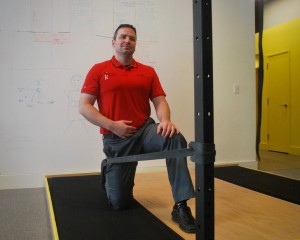
activate the antagonist muscle (the opposite muscle that is not doing its job in the postural tug of war) and it also inhibits the overactive muscle that is pulling to much. In addition to this, it can help to reposition the a bone in a joint socket that may not be fitting correctly. You can hold the stretch for a period of time, or you can do slow movements (such as a lunge during the banded hip stretch.) The banded hip stretch and the banded shoulder capsule stretch from Becoming a Supple Leopard by Dr. Kelly Starrett are terrific options.
Stability Applications
One of the best ways to improve stability is to challenge unstable muscles at a low intensity (below 50% of your 1 rep max) over anywhere from 2-3 minutes. Tempo should be slow, with static holds at the most challenging position will help facilitate correct muscle activation, which leads to stability. Something as simple as a glute bridge, for example, to help re-activate sleepy hip muscles and give over-worked hamstrings a break.
For someone with weak and tight hamstrings and a glute muscles that won’t turn on, try the dowel rod deadlift. The client is instructed to engage the core muscles and squeeze their glutes. Using the dowel rod to make sure their spine maintains proper position, they are instructed to go lower to the lowest position they can handle while maintaining perfect form. The client is then instructed to hold position for 4-10 seconds. This does two things: one, it provides a stretch to the hamstrings while also putting them into a functional position, and two, keeping the glutes and the abdominals activated. It also allows the body to become more mobile because the body knows now it is supported and secure. Ta-da! You ve just stabilized your body and increased mobility at the same time.
In conclusion, we need to balance stability with mobility. Focus on making your posture -both static and dynamic- excellent. If it’s not, try to determine what is impeding your posture. If you free up tight muscles, make sure you have a game plan to engage the other muscles needed to stabilize. Know that your stability and mobility needs are going to fluctuate depending upon the demands you place on your body. This is a constantly evolving game you will play with your body, so make sure you take inventory with your workouts.
If you have questions about how your should be achieving mobility and stability, come by the clinic or give us a call for an evaluation (503) 227 – 2279.
